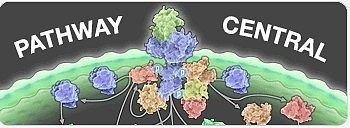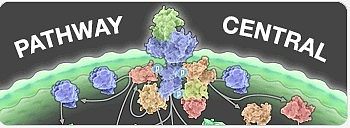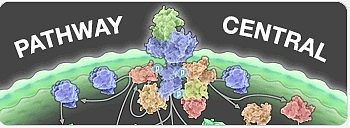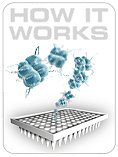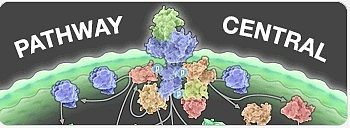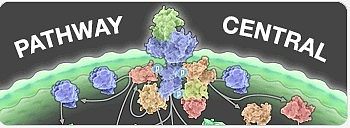
产品详情
文献和实验
相关推荐
服务名称 : 免疫毒性PCR芯片
提供商 :SAbiosciences
“英拜为您实验加速”技术服务网址:http://www.yingbio.com/
服务热线:400-696-6643、 18019265738
邮箱:daihp@yingbio.com 、 huizhang1228@foxmail.com
Immunotoxicity PCR Array
免疫毒性PCR芯片
| Product | Species | Technology | Cat. No. |
| Immunotoxicity PCR Array | Human | Gene Expression | PAHS-179Z |
| Immunotoxicity PCR Array | Mouse | Gene Expression | PAMM-179Z |
| Immunotoxicity PCR Array | Rat | Gene Expression | PARN-179Z |
However, using the typical gross morphological changes, circulation biomarkers, and cellular assays of immune function as phenotypes often requires expensive and time-consuming studies. Genes that consistently exhibit altered expression during these toxic responses in model systems may serve as more readily accessible biomarkers to predict potential adverse clinical outcomes. Profiling the expression of these genes in human cell lines (such as Jurkat cells or peripheral blood mononucleated cells) or organs (especially spleen and thymus) of mice or rats treated with candidate drugs can also help indicate the immunotoxicological response mechanisms that they induce.
An understanding of these mechanisms, currently lacking for most immunotoxicants, can then guide chemical modifications to avoid the observed toxic responses rather than completely dismissing a drug class otherwise effective at preventing or treating the target disease phenotype. This array includes the most differentially expressed genes from published microarray studies analyzing RNA from rodent immune system organs or human immune cells after treatment with various immunotoxicants and immunosuppressive drugs. These genes are known to mediate a number of typical cellular stress responses including cell cycle arrest, drug metabolism and transport, heat shock response, immune and inflammatory responses, oxidative stress response, and the unfolded protein response. A set of controls present on each array enables data analysis using the ΔΔCT method of relative quantification and assessment of reverse transcription performance, genomic DNA contamination, and PCR performance. Using real-time PCR, research studies can easily and reliably analyze the expression of a focused panel of genes to determine the molecular toxicological response pathways that investigational drug candidates activate with this array.
The RT² Profiler PCR Arrays are intended for molecular biology applications. This product is not intended for the diagnosis, prevention, or treatment of a disease.
96-well Plate, 384-well (4 × 96) Plate, and 100-well Disc formats are available
免疫毒性PCR芯片用于研究外源性物质直接损害免疫细胞功能的84个关键基因的表达。减少毒性仍然是药物带入市场的主要障碍使。频繁和麻烦的免疫毒性副作用使免疫系统成为毒理学研究的一个重要目标。然而,使用典型的形态学改变,流通生物标记和表型检测细胞免疫功能,通常需要昂贵和耗时的研究。在这些免疫系统的不良反应模型始终表现差异表达的基因可以作为预测不良临床结果的更容易获取的潜在生物标记。分析这些基因在人类细胞系(如Jurkat细胞或外周血单核的细胞)或药物处理的小鼠或大鼠器官(尤其是脾脏和胸腺) 的表达也可以帮助显示它们诱导的免疫毒性响应机制。这些机制的理解,目前缺乏多数免疫毒性物质,可以指导化学修饰避免观察到的不良反应而不是完全否定药物类,以及有效地预防或治疗目标疾病表型。这个芯片包含了大多数已发表的各种免疫毒性物质和免疫抑制药物处理后在啮齿动物免疫系统器官或人体免疫细胞中芯片分析差异表达的基因。这些基因已知调解一些典型的细胞应激反应包括细胞周期阻滞,药物代谢和运输,热休克反应,免疫和炎症反应,氧化应激反应,以及非折叠蛋白反应。每张芯片含一个对照组使得分析数据时可以用相对定量ΔΔCT方法评估逆转录效率,基因组DNA污染,和PCR效率。利用这张芯片,通过实时定量PCR,可以简易且可靠地分析临床性候选药物激活的分子毒理学反应通路关键基因的表达。
PCR芯片仅用于分子生物学应用。本产品不用于疾病的诊断、预防和治疗。
提供96孔板——384 -(4 x 96)板,和100孔板
Upregulated in Immunotoxicity: ABCA1, ABCG1, ADH1C, AHSG, APOA5, APOF, C9, F2, FABP1, GSTA3, HPX, HRG, MARC1, NR5A2, PON1, SERPINA3, VPREB1.
Downregulated in Immunotoxicity: APOL3, APOL4, BTNL10, BZRAP1, CCNB2, CDR2, CRIM1, CTSE, GPR17, GYPA, HMGCS1, ISG20, KLF1, KLF2, LYZ, MKI67, SLC7A11, SNCA, TRIM10.
Immune Responses: AHSG, ANG, C9, CCR5, CEBPB, CTSE, HPX, F2, FN1, IFI6, IGJ, IGSF6, ISG20, KLF2, LAT2, LYZ, PAWR, SERPINA3, SNCA, THBS1, TLR4, VPREB1.
Inflammatory Responses: AHSG, APOL3, CCR5, CEBPB, F2, FN1, SERPINA3, SPP1, TLR4.
Drug Metabolism: ADH1C, ALDH8A1, BZRAP1, CYP3A5, GSTA3, MARC1, MT1F, NQO1, PON1.
Drug Transporters: ABCA1, ABCG1, SLC25A13, SLC31A1, SLC7A11.
Glucocorticoid Signaling: AK4, CEBPB, VLDLR.
Heat Shock Response: HSPA1B, HSPA5.
Oxidative Stress: HPX, KLF2, MT1F, NQO1, PON1, SLC7A11, SNCA, SRXN1.
Unfolded Protein Response: CEBPB, CHAC1, HSPA1B, HSPA5, TM6SF1, VLDLR.
Cell Cycle: CCNB2, CCNG2, FBXO32, FBXO38, KLHL24, MKI67.
Channels & Transporters: ABCA1, ABCG1, ATP2B1, CHAC1, KCNQ1, SLC25A13, SLC31A1, SLC7A11.
Cytoskeletal Regulators: ANG, GEMIN5, GYPA, HRG, MYH3, PAWR.
Cytokine & Chemokine Receptors: ACKR3, CCR5, CRIM1, GPR17, TLR4.
Extracellular Matrix and Adhesion Molecules: FEZ1, FN1, GPNMB, HRG, SERPINA3, SPP1, THBS1.
G Protein Coupled Receptor Signaling: ARRDC3, CCR5, ACKR3, GPR17, GPR18.
Lipoprotein Signaling & Cholesterol Metabolism: ABCA1, ABCG1, ALDH8A1, APOA5, APOF, APOL3, APOL4, HMGCS1, VLDLR, VPREB1.
Transcription Factors: ATF3, CEBPB, ID1, ID2, KLF1, KLF2, NR5A2, PAWR, TRIM10, ZDHHC14.
Other Genes: BTNL10, C7orf50, CDR2, FABP1, METAP2, NEU4, PSD3, SNX25, VMP1

上海英拜生物科技有限公司
实名认证
钻石会员
入驻年限:13年


